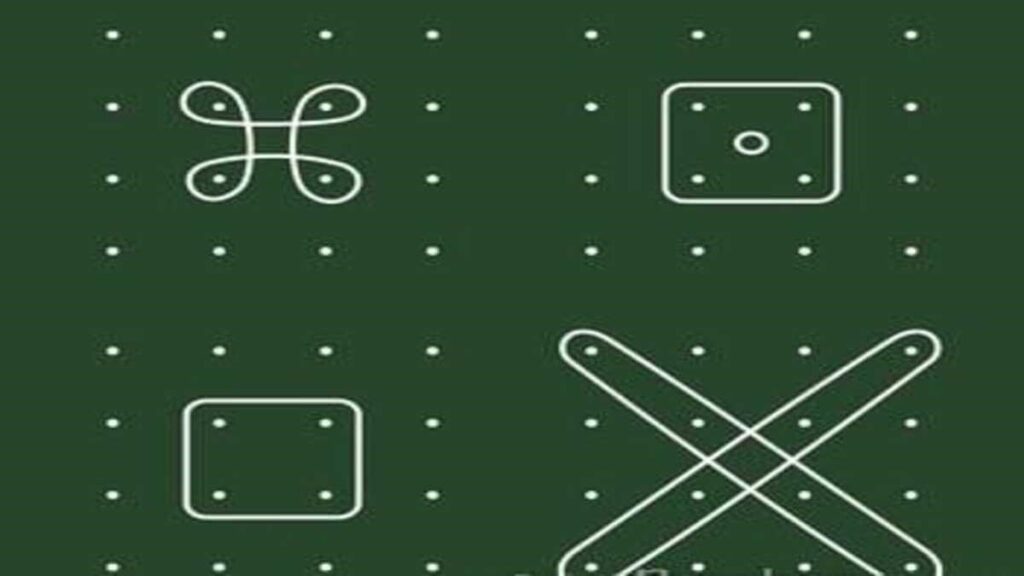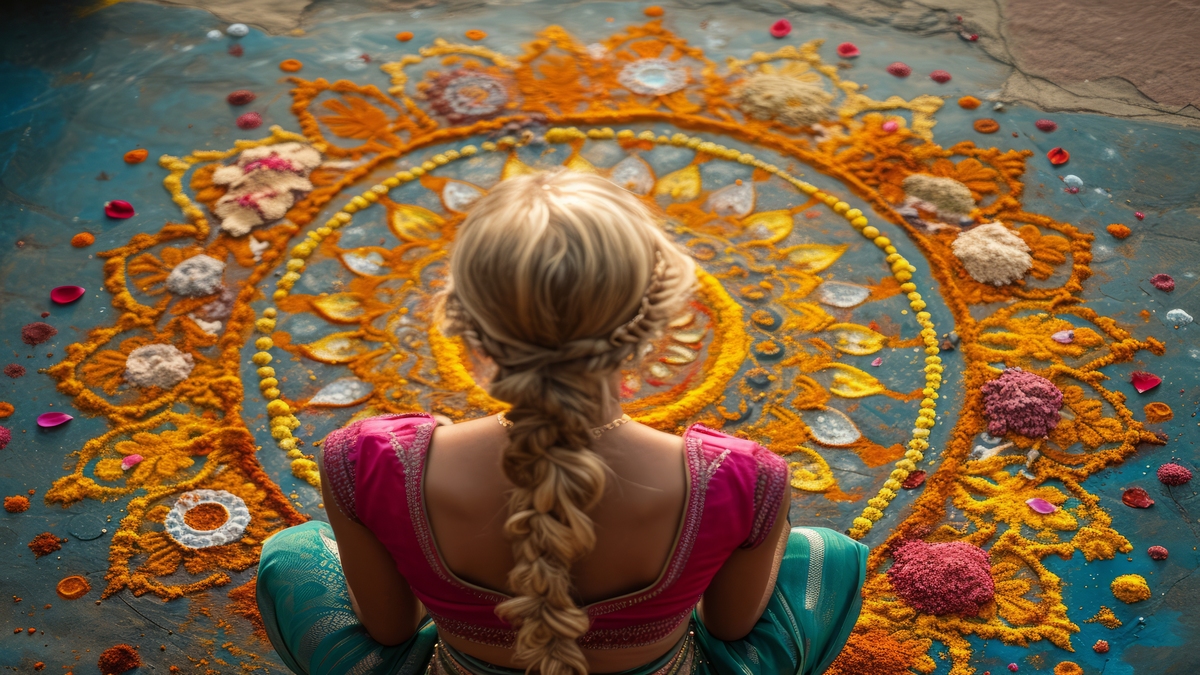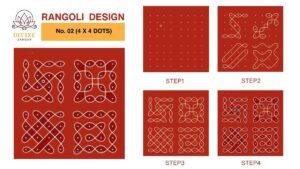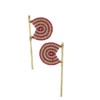Different regions and customs have different names for Kolam Rangoli. Rangoli is a common decoration for walls, courtyards, and homes on auspicious occasions, and it is said to bring wealth. Pattern Kolam Rangoli symbolizes brightness to life, much like the colors used in it, and draws pleasure, joy, luck, and good fortune to the family. It keeps bad energy outside the house and enhances the celebratory delight by making the place more beautiful.
About Pattern Kolam Rangoli
Kolam patterns are made up of loops, curves, and lines. In addition to forms of birds, animals, the sun, moon, stars, and other natural elements, simple and complicated shapes may also be included in the composition. It is required to finish the forms, and the kolam or rangoli is traditionally created around a grid of dots.
Kolams, also known as Muggulu, deeply ingrain the state cultures of South India, including Tamil Nadu, Andhra Pradesh, and Telangana. Every day before dawn, women in certain Indian regions of the country draw kolams at the front door of their homes. They clean and mist the area where they will draw the kolam before daybreak. The water improves the surface adhesion of the flour or stone powder. Cow dung has antiseptic qualities that keep bacteria and germs out of the house, so you may also use it to wax the surface before drawing the kolam.
Patterns & Motifs in Kolam Designs

The use of fish, birds, and other animal imagery symbolizes the combination of people and animals. One can also utilize the sun, moon, and zodiac symbols.
In Kolam, some shapes and pictures have symbolic meanings. An upward-pointing triangle, on the other hand, is indicative of a man, and a downward-pointing triangle, of a woman. The form of a lotus represents a womb. A pentagram represents Venus and the five elements.
Kolam artwork can also include wishes such as “Welcome” or “Happy New Year.”
The designs have evolved significantly over time as generations have passed down the practice of creating kolams. Social networking sites have made it possible for kolam artists to display their work online these days, and several of them have developed sizable fan bases. Social media has allowed the art forms of rangoli and kolam to spread widely and become well-known worldwide.
Pattern Kolam Rangoli Spiritual Significance
- The Kolam symbolizes the peaceful coexistence of people and wildlife and typically contains imagery of birds, animals, and celestial objects.
- The initial intent of creating kolam with rice flour was to make it easier for ants and other wildlife to locate food without having to venture inside the home or across great distances on foot.
- Not only may kolam or rangoli be used to welcome people into a home but it can also be used to welcome birds and other tiny creatures that may visit in quest of food. Insects and birds would consume the rice flour designs made with it and return from the home entry satisfied, serving as both a decorative and food source.
- Kolam is thought to be the way to welcome goddess Lakshmi into the home and bring wealth and success with her.
- When drawing the kolam, it is customary to finish lines and close forms to keep evil spirits out of the pattern and, consequently, the dwelling.
- Making kolams is a great way to foster respect for culture and customs as well as a greater awareness of cultural variety.
- This technique is a metaphor for the ultimate reality that everything produced is destroyed and regenerated, or that nothing lasts forever but may be created again since a new kolam is drawn every day.
- The act of drawing a new kolam every day serves as a reminder that, even if a design fails, you can always start over and come up with something new. This is analogous to the real-world idea that, even in the event that something fails, there is always room to try again or reinvent the wheel.
By creating a fresh rangoli or kolam every morning, you are symbolically reminding yourself that each day is a fresh start, that you should live in the moment and not worry about the past or the future, but instead concentrate on making today beautiful.
Steps Pattern Kolam Rangoli
Usually, drawing a dot kolam rangoli entails arranging a matrix of dots into complex designs. You may make a simple dot kolam rangoli in the following five steps:
- Get the Base Ready: Make a grid of dots on the ground or a piece of paper to start. Use chalk or dots to arrange them in even numbers, ensuring the pattern is symmetrical.

2. Join the Dots: Join the dots with lines to create a simple floral or geometric design. These designs typically have a main subject and are symmetrical.

3. Create Layers and Detail: Using tiny dots and lines, create layers and features surrounding the main design. This gives the design more nuance and intricacy.

4. Use Colors: If you’d like, use colored chalks or powders (rangoli powder) to fill in the design. Typically, people employ bright hues like red, yellow, green, and blue.

5. Final Details: Finish the rangoli by smoothing the edges and adding any last details. Make sure the pattern is harmonious and eye-catching before completing the design.
Conclusion
Having learned about the scientific and spiritual properties of kolam, you should reconsider your previous perception of it. It’s more than just a door decoration. It holds deeper cultural and symbolic significance. Drawing rangolis is far more than that. It’s a means for you to express yourself artistically. The technique is calming and contemplative because of the focus required to create the pattern. Every day, you replace your old rangoli with a new one, made with even more fervor. The old one is gone, but the tradition continues with renewed creativity each day. By doing this, you are teaching your mind to “start again” and live in the present. Thus, the historic origins of the kolam ritual make it delightful in many ways. Make the little kolam a part of your everyday practice.



















Add comment